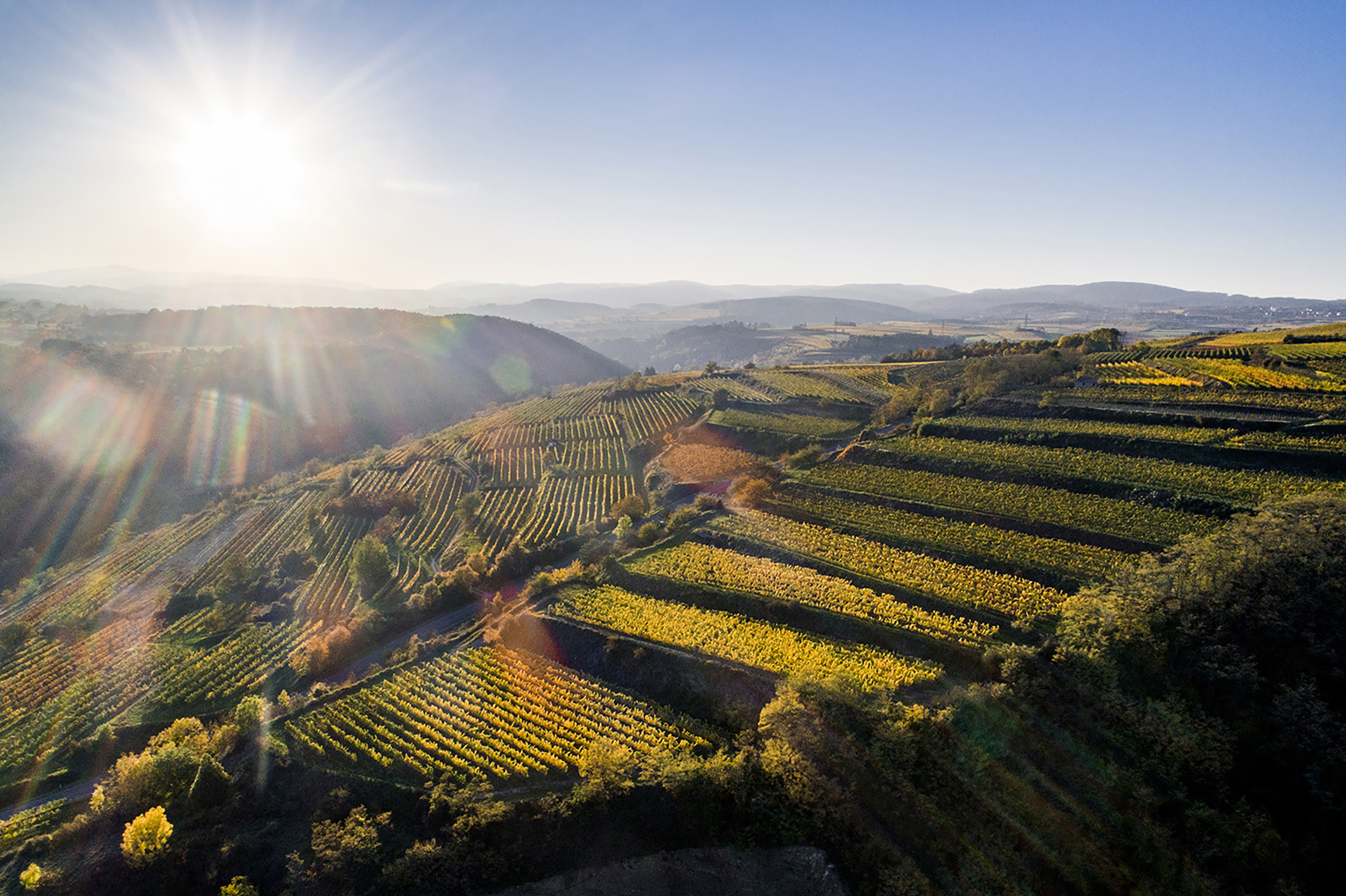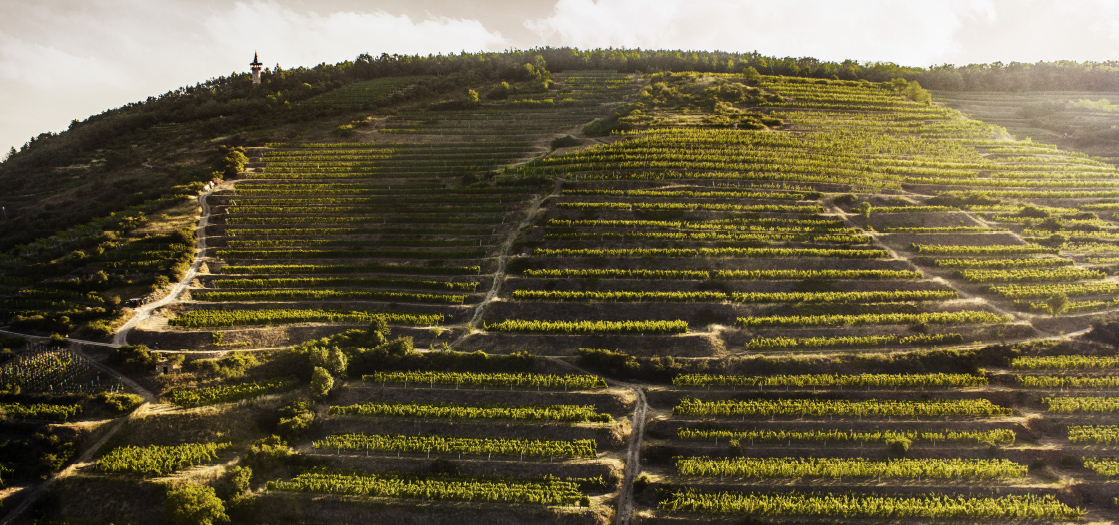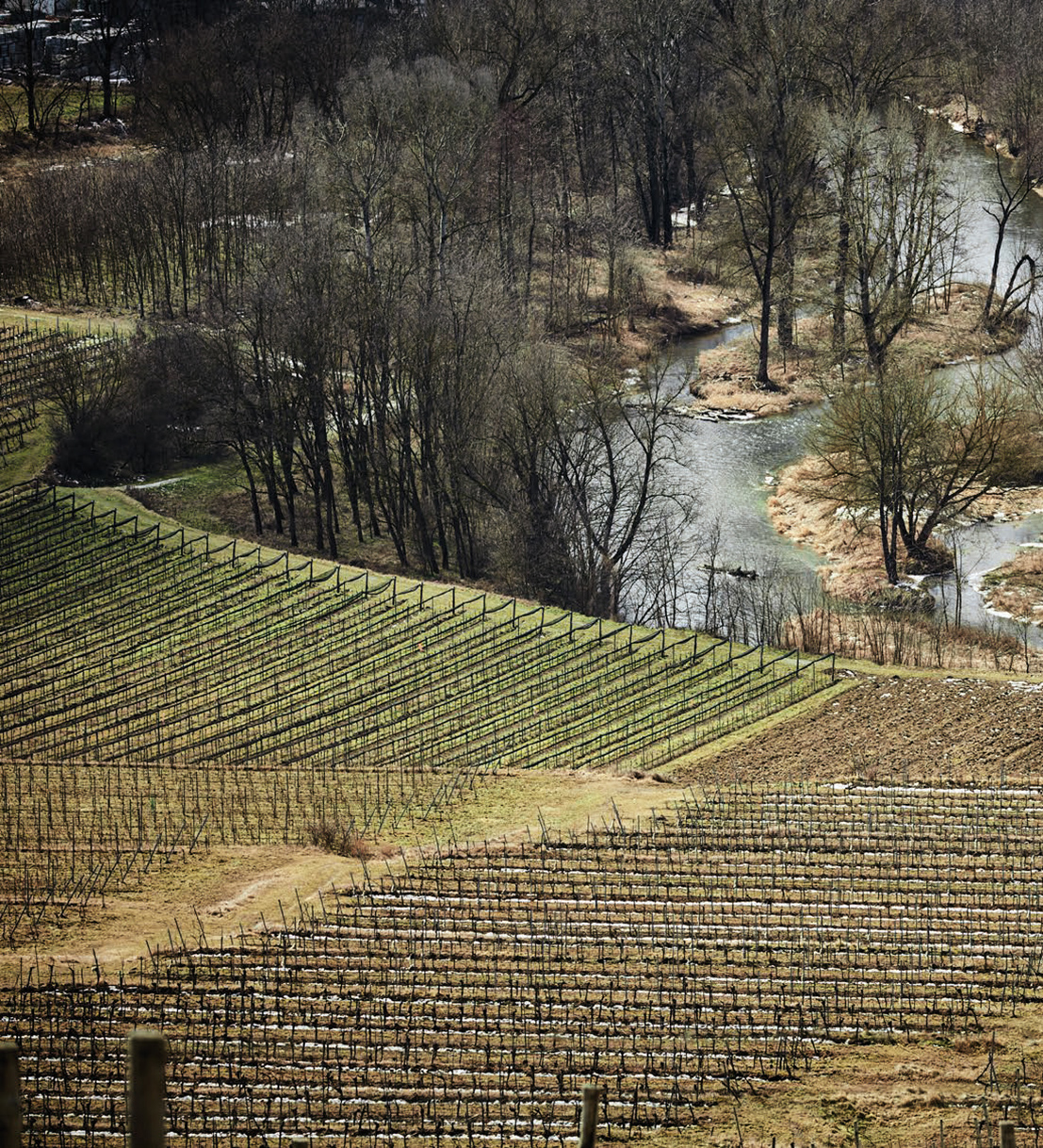

On its way down to the Danube plain, the region’s namesake river Kamp dug a deep valley into the highlands of the Waldviertel, dominated by soils of granite & gneiss. In its lower reaches, the valley gradually becomes wider and branches out; the undulating landscape gives way to plains, the forest to grapevines. Here, the Kamptal embraces a geological borderland. On the steep slopes, organised centuries ago into terraces, vines grow on the crystalline rock collection of the Bohemian Massif (gneiss, amphibolite, granite, mica schist & weathered soils). The slopes level off and gradually dip into the layers of loess – deposited through the ages by powerful dust storms – that preponderantly dominate the southern part of the winegrowing region.
 Heiligenstein
Heiligenstein
 the Kamp river
the Kamp river
 Terraces in winter
Terraces in winter
In the Kamptal one finds an enormous variety of different soil types within a very narrow area. In addition, there is a microclimate moulded by a notable zone of dynamic tension between warm days & cold nights. Cool air masses coming from the sylvan highlands in the northwest are typical for the area; these currents penetrate the valley after sunset and displace the Pannonian warmth, making the Kamptal one of Austria’s coolest winegrowing regions. Leading varieties Grüner Veltliner & Riesling account for the greatest areas under cultivation.
Profile Kamptal
• Hectares: 3900
• Important municipalities: Langenlois, Zöbing, Strass, Gobelsburg, Schönberg, Schiltern
• Important DAC varieties: Grüner Veltliner, Riesling
• Classified vineyards: 20 Erste Lagen
• Average hours of sunshine over the last ten years: 1734 h
• Average precipitation over the last ten years: 502 mm
• Average temperature: 9,2°C
A complete overview of the regions and the classified vineyard sites for download as PDF.
